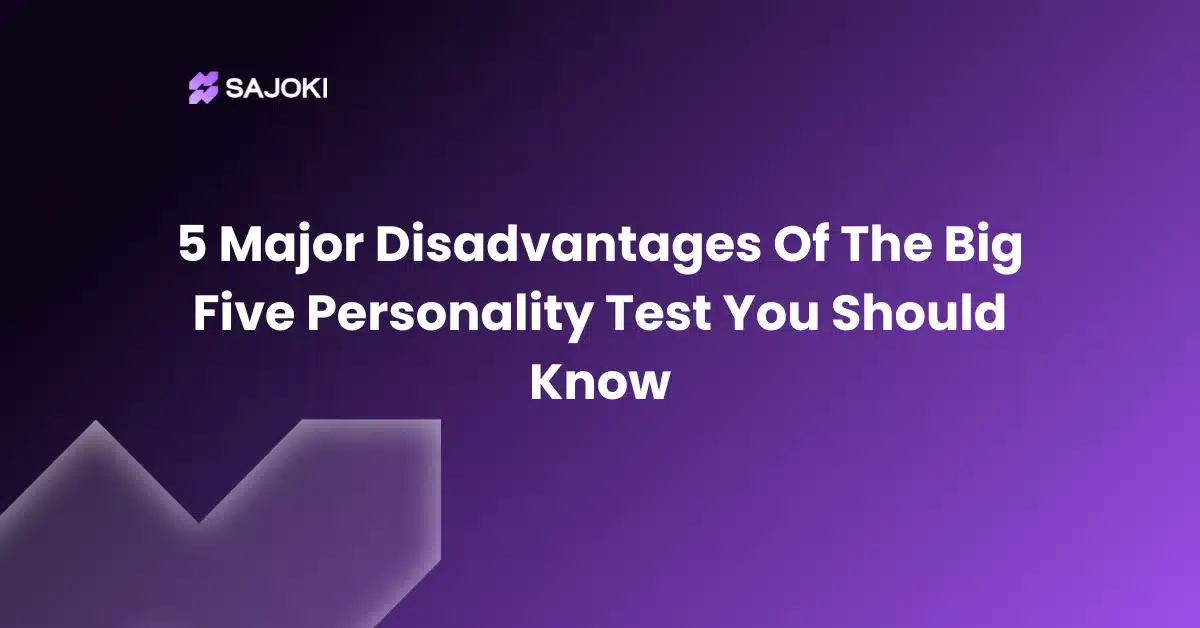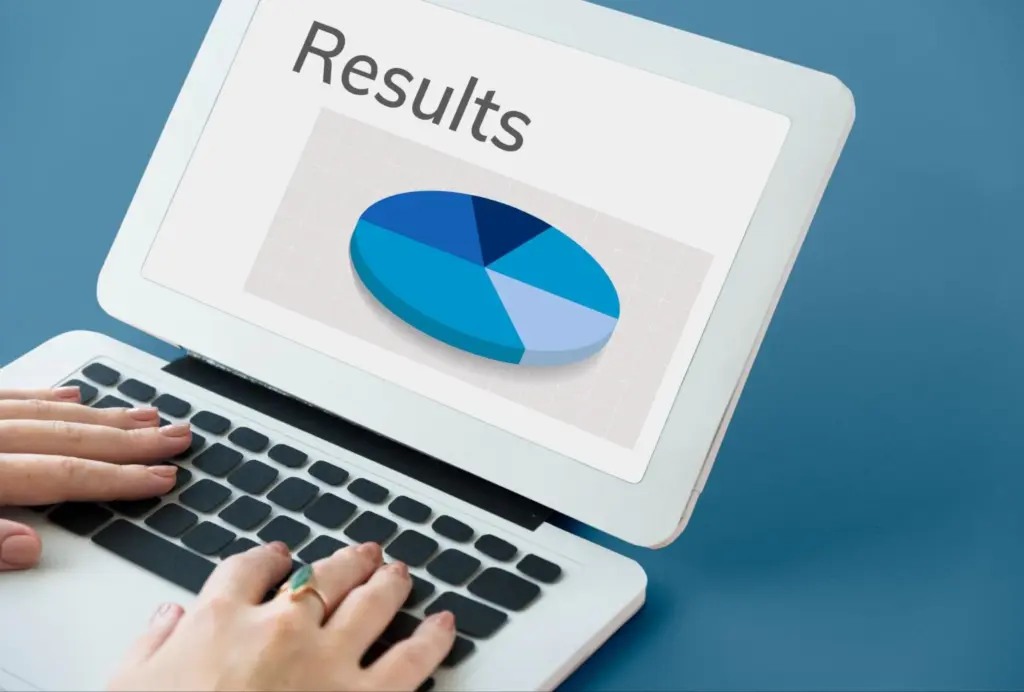Personality tests are now a routine process in modern companies to understand human behavior. From HR departments to career advisers, the Big Five personality test is among the most reliable assessments in psychology.
However, does that mean it doesn’t have any disadvantages? Well, everything has its cons.
So, what are the disadvantages of the Big Five personality test?
It reduces complicated human personality to just five categories, which is an oversimplification. The test faces cultural variations and assumes your personality never changes. Moreover, the outcomes are not always consistent or useful in daily life.
In this article, we will break down each major disadvantage of the Big Five personality test. Furthermore, the right way of using the Big Five will also be covered, so you can avoid the disadvantages. Let’s start with the most basic question.
What is the Big Five Personality Framework
Before we dive into the disadvantages of the Big Five personality test, it’s essential to understand what it is.
The Big Five personality framework divides your identity into five primary components. Consider it similar to putting individuals into five distinct categories according to their behavior.
The five parts spell out OCEAN: Openness, Conscientiousness, Extraversion, Agreeableness, and Neuroticism. Let’s dive into these 5 personality types.
The Five Core Dimensions
Openness mostly consists of curiosity and trying new things. While some people would prefer to stick to what they know, others would love fresh ideas and adventures.
Being conscientious means being responsible and well-organized. Do you create lists and follow through on them? Or do you usually just go with the flow? This is measured by the Conscientiousness dimension of the Big Five.
Extraversion analyzes your energy sources. Those who enjoy parties and crowds do well here. Quiet people who only refuel from spending time with themselves receive lower scores here. Both types are totally normal.
To be agreeable means to get along with other people. Some people want everyone to be happy and steer clear of conflict. When necessary, others don’t mind expressing disagreement.
Your level of neuroticism indicates how much you worry. Everybody experiences stress from time to time. However, some people are better at handling pressure than others.
How the Test Actually Works
The test is fairly easy to take. You decide whether or not statements on behavior fit you after reading them. The range of the scale usually is “strongly disagree” to “strongly agree.”
For example, “I keep my room clean” or “I enjoy meeting new people” are samples of possible questions. Simply choose the degree to which each statement applies to you.
Furthermore, the majority of tests consist of 44–240 questions. Each of the five areas gets a score based on your responses. However, you don’t succeed or fail as there’s no right or wrong answer.
It’s more comparable to receiving a report card that highlights your strengths.
Where People Use This Test
When hiring new staff, companies use it. They believe that some personality types are better suited for particular job roles.
Similarly, it may be used by schools to assist students in selecting potential careers.
On the other hand, at times, therapists use it to gain a deeper understanding of their clients. It is studied by researchers to understand how different groups of people differ in their personalities.
If you are wondering why you see the Big Five personality test everywhere, it’s because it appears to be official and scientific, as per the researchers.
Existing Relevant Content:
How To Score The Big Five Personality Test
Advantages And Disadvantages Of The Big Five Personality Test
5 Disadvantages Of The Big Five Personality Test
Despite being a popular personality test that is scientifically validated, it still has its drawbacks. Well, everything has its pros and cons. We will only focus on the cons today. Let’s start.
1. It Makes People Too Simple
This is the main problem with the Big Five test. It attempts to condense human personality into five categories. A great example of what it’s trying to do is summing up an entire movie in 5 words.
Five categories cannot adequately describe the complexity of the human brain. You may be extremely well-organized at work but disorganized at home. These contradictions are difficult for the test to handle.
Consider your friends. Is it really possible to sum up each one in five characteristics? Most likely not. Everybody has unique features and distinctive characteristics that resist easy classification.
Additionally, the test generates labels that are memorable. Once someone is labeled as “low in agreeableness,” they may be perceived as challenging for the rest of their life. Job opportunities and relationships may suffer as a result.
2. It Doesn’t Work Well Across Cultures
Western researchers who primarily studied Westerners developed the Big Five. Thus, when you try to use it anywhere else in the world, that becomes an issue.
Personality traits are valued differently in different cultures. In Germany, what appears to be “low agreeableness” in America may actually be typical directness. These cultural differences are not taken into consideration by the test.
Furthermore, a lot of researches show that the test performs poorly outside of Western culture. The five factors don’t always show up the same way. Researchers occasionally discover completely different aspects of personality.
Unfair judgments may result from this cultural bias. Think of a business that employs this test to select candidates from various backgrounds. They may unintentionally discriminate without recognizing it.
3. People Change, But the Test Doesn’t Notice
The Big Five assumes your personality stays mostly constant over your life. Real people, though, do not function like that. Our experiences help to define and grow us.
Someone who was quiet in high school could find themselves friendly in college. Similarly, a disorganized person may become organized after having children. Thus, the test often fails to measure the changes one goes through with time.
Depending on the circumstances, your personality also changes. You may be quiet during meetings at wor,k but extremely outgoing around close friends. The test gives you one score that’s supposed to represent you everywhere.
This unchanging perspective on personality may be harmful. People may believe they are incapable of evolving or changing as a result. Simply put, that is untrue.
4. The Test Results Aren’t Always Reliable
Another disadvantages of the Big Five personality test is that the test results aren’t always reliable. How do we know it’s not always reliable? Well, the test results sometimes don’t result in the same score when taken a second time.
Your responses might be shaped by your recent events, degree of stress, or mood. Most people want to look good when they are being tested. Their response to questions could improve their likability or competency, as per the answers. This social desirability bias thus causes the outcomes to be altered.
Besides, the test depends totally on self-reporting. You have to be sincere about your flaws and really know yourself. Many people struggle in both of these areas.
Other studies claim the test cannot fairly forecast success in the real world. Your Big Five results might not give much indication of your possible performance in the workplace.
5. It’s Hard to Use in Real Life
Getting your Big Five results is one thing. But figuring out what to do with them is another essential thing. You don’t get a lot of helpful suggestions for improvement from the test.
Suppose your conscientiousness score is low. Well, what comes next? You can’t learn how to get more organized from the test. It simply categorizes you as unorganized.
Although a lot of businesses use these tests for hiring, there is frequently little correlation between personality traits and job performance. A candidate’s “perfect” personality does not ensure that they will perform well at work.
Additionally, the test overlooks motivation, experience, and skills. For success, these elements frequently matter more than personality traits. However, the Big Five don’t even measure them.
How to Use the Big Five Personality Test Properly: 5 Key Ways
Now that you are aware of the disadvantages of the Big Five Personlaity test, we can dive into how to use the Big Five test properly.
Just because the assessment has disadvantages doesn’t mean it’s not useful. All personality tests come with cons. Knowing how to use it can be a game, so let’s start.
1. Know What You’re Getting Into
It’s important to know what the Big Five test cannot do before using it. Firstly, it won’t provide you with a comprehensive understanding of a person’s personality. The assessment will not be so much an accurate representation as it is a rough sketch of the human mind.
The test has real limits that could affect your decisions. It could thus ignore important traits or cultural differences. Moreover, some people respond dishonestly on tests. Bad days could cause others to alter their results.
Smart users of the assessment always remember these issues. When deciding on crucial matters, they do not rely just on test findings. Rather, they treat the results as though they were one bit of data among many.
2. Use Multiple Assessment Tools
Personality tests should never be the only tool used to assess individuals. Consider it similar to purchasing a car. You wouldn’t make a decision based solely on color. You would read reviews, test drive it, and inspect the engine.
Similarly, integrate reference checks, work samples, and interviews with the Big Five. Pay attention to how people act in actual circumstances. Ask specifically about their prior experiences and difficulties.
For job performance, skills tests are frequently more important than personality tests. It’s possible for someone to excel at their work despite having the “wrong” personality profile. Overall, test results shouldn’t take priority over proof of genuine talent.
3. Proper Interpretation of Results With Qualified Professionals
Don’t attempt to figure out the Big Five results by yourself if you are not a professional interpreter. It can be challenging to accurately interpret the scores. For example, what appears to be a warning sign could be a typical variation.
You can get assistance from qualified HR specialists or psychologists in understanding the data. They are skilled at identifying potentially faulty results. Moreover, they can also assist you in avoiding typical interpretation errors.
The expense of hiring a professional interpreter is justified. In the long run, it can be far more costly to make poor decisions based on misinterpreted test results.
4. Know When the Test Actually Works
The Big Five works better in some situations than in others. For team-building exercises or career counseling, for instance, it might be useful. In these low-stakes situations, people can grow personally without running major risks.
Personality testing is also useful in academic and research contexts. When scientists study groups of people, they can discover patterns that are helpful.
On the other hand, the test can help to effectively address issues on work styles and communication preferences. Use these conversations, however, not to decide who gets hired or let go.
5. Set Realistic Expectations
Your best employee won’t be predicted by the Big Five. Also, it won’t tell you whether a person will enjoy their work. Moreover, it will undoubtedly not disclose a person’s morals or character.
However, it can provide you with a foundation for comprehending behavioral patterns.
Make use of these insights to formulate more focused questions and have better conversations. But keep in mind that circumstances matter and people are complicated. If given the chance, your quiet employee could be a fantastic leader.
FAQ
1. Can you fake the Big Five personality test?
In reality, if you know what companies want to see, it’s rather simple to pass for fake. Most questions have clear details concerning their measuring requirements.
2. Are there age limits for taking the Big Five test?
Most versions are meant for those eighteen years of age and above. Teenager versions exist, but since personality is still developing during those years, they are less consistent.
3. How much does a professional Big Five assessment cost?
There are free online versions, but generally, they are less accurate than paid tests. Typically, professional evaluations operate from $15 to $100 per person.
Conclusion
To conclude, those were the 5 notable disadvantages of the Big Five personality test. Does this indicate you should never use the Big Five test? Not exactly. You should be aware of its limitations, though, before basing significant decisions on the result.
Remember that no test can fairly represent the sophisticated organisms that are humans. Our experiences, environment, and own growth enable us to evolve. Overall, a personality test can offer some interesting information, but it will never completely reveal who someone really is.








